By Jim Davis - Florida Catholic
Photography: JIM DAVIS | FC
MIAMI | “Doubting Thomas”: an unfortunate way to be remembered for 20 centuries. Far more than a skeptic, St. Thomas was a brave, decisive disciple, taking Christ deep into Asia.
Many Christians know his reaction at reports of the resurrected Jesus: “Unless I place my finger in his nail prints and my hand in his side, I will not believe!” They may be less likely to recall the courage and forthright manner that guided Thomas’ steps.
Compared to more prominent disciples like Peter, little is known of Thomas’ early life. The New Testament lists him in the middle third, along with Philip, Matthew and Bartholomew. His name is derived from the Aramaic Te’oma, meaning “twin” – the equivalent of the Greek New Testament word Didymus. So he apparently had an identical brother.
Thomas stands out more in the Gospel According to John. When Jesus said he would visit the grave of his friend Lazarus, the other disciples warned him that his enemies wanted him dead as well. Thomas was undeterred: “Let us also go to die with him.” Then they all accompanied Jesus, who resurrected Lazarus.
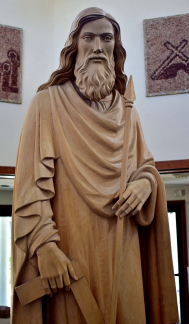
Photographer: James Dwight Davis
Thomas statue holds the spear by which, according to tradition, he was martyred.
In John’s account of the Last Supper, most of the disciples sat silent as Jesus gave his mystical discourse about going to his Father’s house to prepare dwellings for them. It was Thomas who wanted details: “Master, we do not know where you are going; how can we know the way?” That gave Jesus the opening to declare himself “the Way, the Truth and the Life.”
Even in the “doubting Thomas” episode, he instantly recognized who Jesus really was. When Christ challenged him to “put your finger here and see my hands, and bring your hand and put it into my side,” Thomas exclaimed, “My Lord and my God!” – one of the most direct declarations of Jesus’ divinity in scripture.
Beyond those mentions, the Bible says nothing more of Thomas. But several nonbiblical books retell legends that he traveled to Persia, then to India. Some eastern churches in China and Japan say he carried the message there before returning to India. If so, he was by far the most traveled of the 12 apostles.
One story had him commissioned to build a palace for an Indian king. Thomas, however, used the money to help the poor, and the king imprisoned him. But when the king’s brother died, he sent for the apostle. As Thomas prayed, the brother came back to life, leading to the conversion of the king and many of his subjects.
Tradition says Thomas was martyred in 72 A.D. in Madras, another kingdom in India. According to the story, the local ruler ordered him to offer a sacrifice to an idol. When Thomas approached the idol, it shattered. He was then speared to death by four soldiers.
If the legends are true, his remains traveled as much as he did in life. The stories say he was buried first in India, but a king there released his relics in the third century to Edessa, in modern Turkey, where he is said to have sent newsletters. Finally, some of his remains were brought in the 13th century to Ortona, Italy.
A group of churches, calling themselves Thomas Christians, trace their origin to his mission to India. Among them is the Mar Thoma Church of South Florida, which was founded in 1981 and has a sanctuary in Davie.
For the many stories attached to his life, Thomas is the patron saint of theologians, architects, builders, surveyors, construction workers, stone masons, and of course doubters. He is also the patron of India, Pakistan and Sri Lanka.
His feast day is just as varied. The Catholic Church first assigned it on Dec. 21, but in 1969 moved it to July 3. Anglicans still keep the Dec. 21 date. Greek Orthodox churches hold the feast on Oct. 6. The several observances show the reverence Thomas retains throughout much of Christendom.
His spiritual turnabout itself has benefited Christians, according to Pope Gregory the Great. Said the sixth century pontiff: “Thomas’ lack of faith did more for our faith than did the faith of the disciples who believed.”
At St. Thomas the Apostle Church in Miami, an imposing statue in the narthex shows the apostle in a dignified stance, holding the spear that killed him. The statue also has him holding a square rule, based on a belief that he was a carpenter.
The octagonal church sits on 18 acres along with the rectory, parish school and meditation garden. Among the statues in the gardens are those of saints Francis, John Paul II and Elizabeth Ann Seton, as well as the risen Christ.
The congregation was founded in 1961 but didn't dedicate its main church building until 1964. The previous Christmas, the members braved winter winds during Midnight Mass in the unroofed building. Over the following decades, the parish added a chapel and family center, and renovated the rectory and offices.
St. Thomas’ current pastor, Father Alejandro J. Rodriguez Artola, is home-grown: He was baptized there and attended its school through eighth grade. He was appointed pastor in 2013.
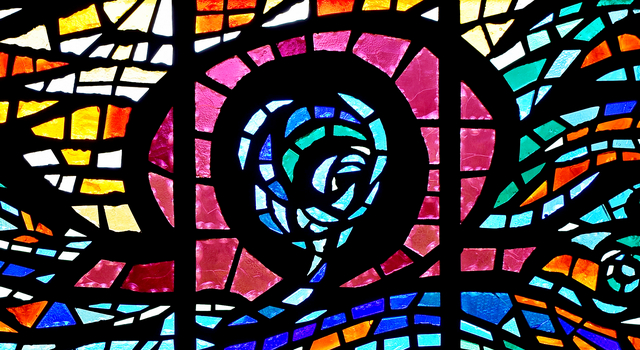


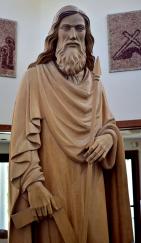
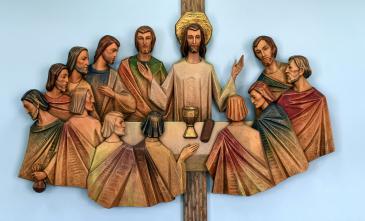
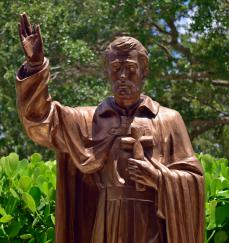
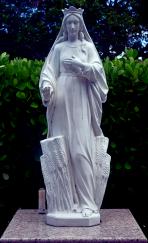
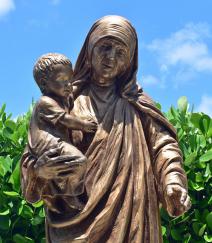
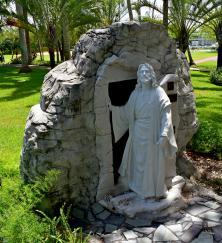
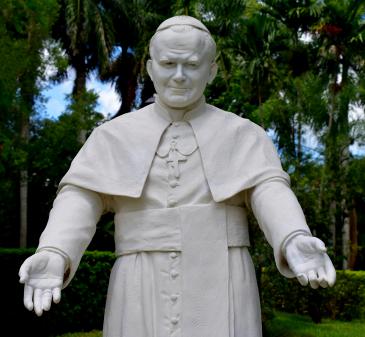
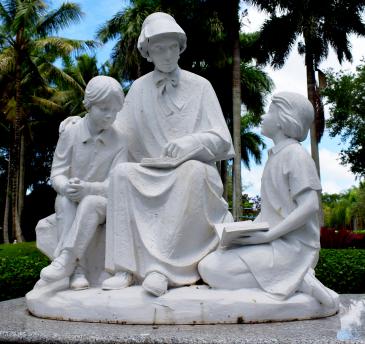
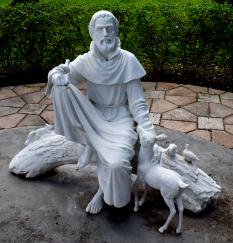
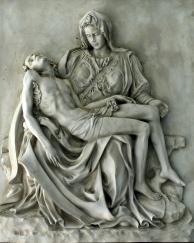
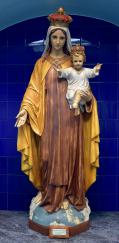
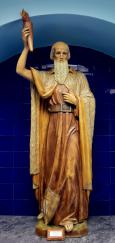
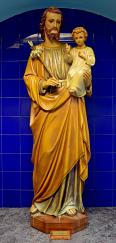
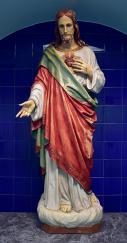
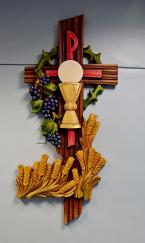
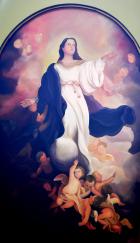
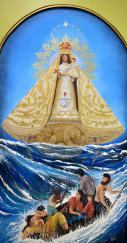
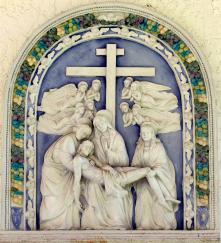
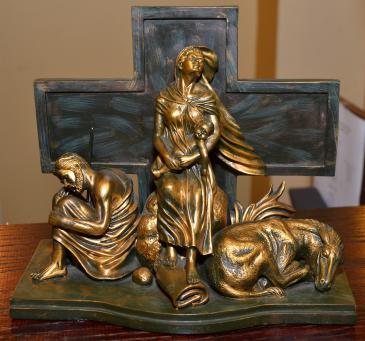
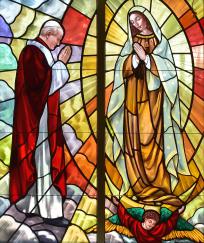
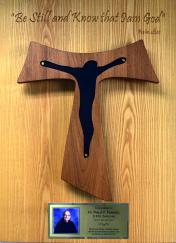
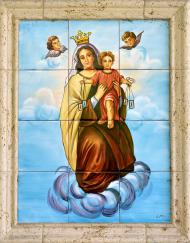
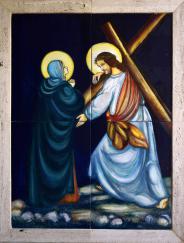
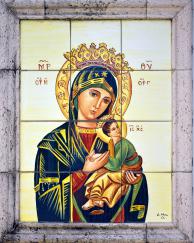
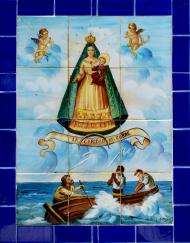

Comments from readers